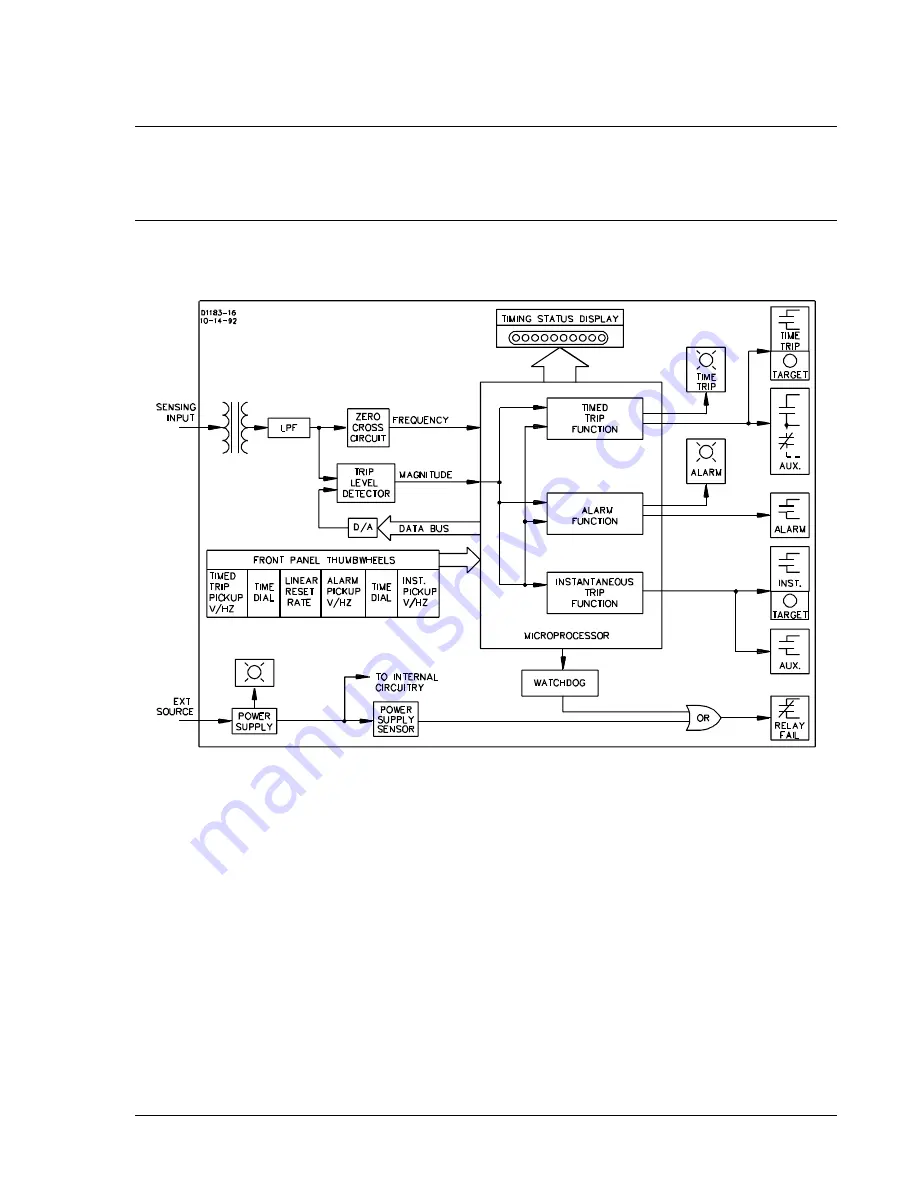
BE1-24 Functional Description
3-1
SECTION 3 • FUNCTIONAL DESCRIPTION
GENERAL
BE1-24 Volts Per Hertz Overexcitation Relays are microprocessor based to match application requirements,
achieve accuracy of measurements and repeatability.
FUNCTIONAL DESCRIPTION
The following descriptions are referenced to the functional block diagram, Figure 3-1.
Figure 3-1. Functional Block Diagram
Thumbwheel Switches
Thumbwheel switches on the front panel of the relay are easily adjusted to define the relay operating
characteristics. These thumbwheel settings define the volts per hertz pickup levels for the time delayed trip,
the alarm, and the (optional) instantaneous trip functions. Thumbwheel settings also define the time delay
for tripping and reset.
Input Sensing
BE1-24 relays have input sensing transformers that sense a single phase of system voltage. These
transformers have a measuring range of 10 to 360 volts at frequencies from 3 to 72 hertz. The rating of five
volts per hertz identifies the absolute maximum voltage at a given frequency at which the relay is able to
perform correctly for all system operating conditions.
Summary of Contents for BE1-24
Page 9: ...1 4 BE1 24 General Information Figure 1 1 Inverse Square vs Two Step...
Page 10: ...BE1 24 General Information 1 5 Figure 1 2 Protection Characteristics of the BE1 24...
Page 12: ...BE1 24 General Information 1 7 Figure 1 3 Style Number Identification Chart...
Page 16: ...BE1 24 General Information 1 11 Figure 1 4 Inverse Square Characteristic Curves...
Page 19: ...2 2 BE1 24 Human Machine Interface Figure 2 1 Location of Controls and Indicators...
Page 27: ...4 2 BE1 24 Installation Figure 4 1 M1 Case Outline Dimensions Front View...
Page 30: ...BE1 24 Installation 4 5 Figure 4 4 M1 Case Double Ended Panel Drilling Diagram Rear View...
Page 31: ...4 6 BE1 24 Installation Figure 4 5 M1 Case Panel Drilling Diagram...
Page 32: ...BE1 24 Installation 4 7 Figure 4 6 M1 Case Projection Mounting Outline Dimensions Rear View...
Page 34: ...BE1 24 Installation 4 9 Figure 4 7 Typical Internal Connections...
















































